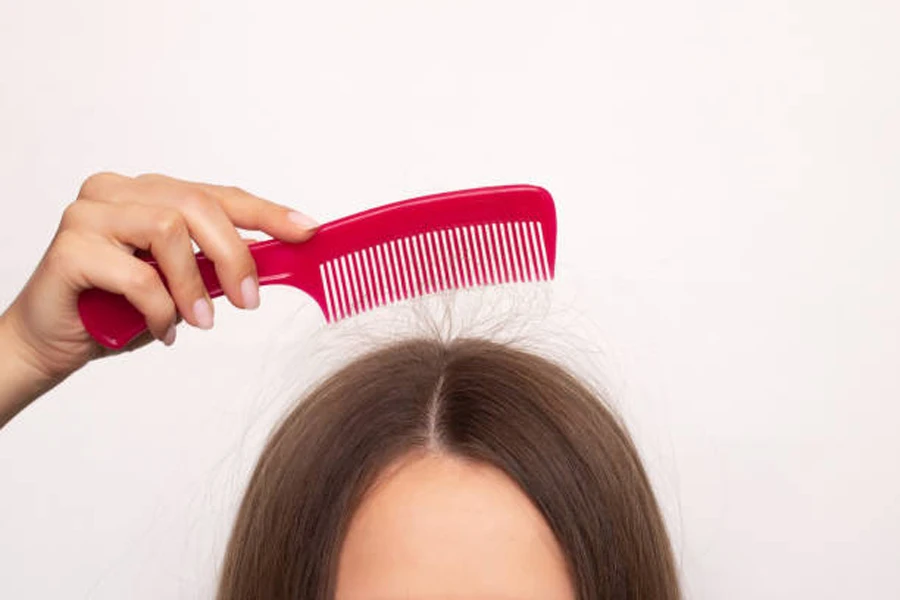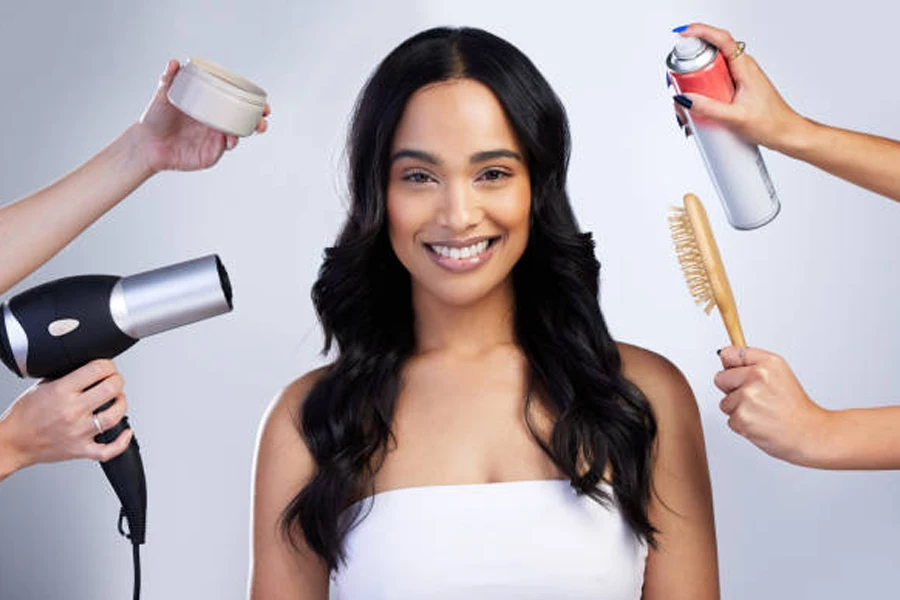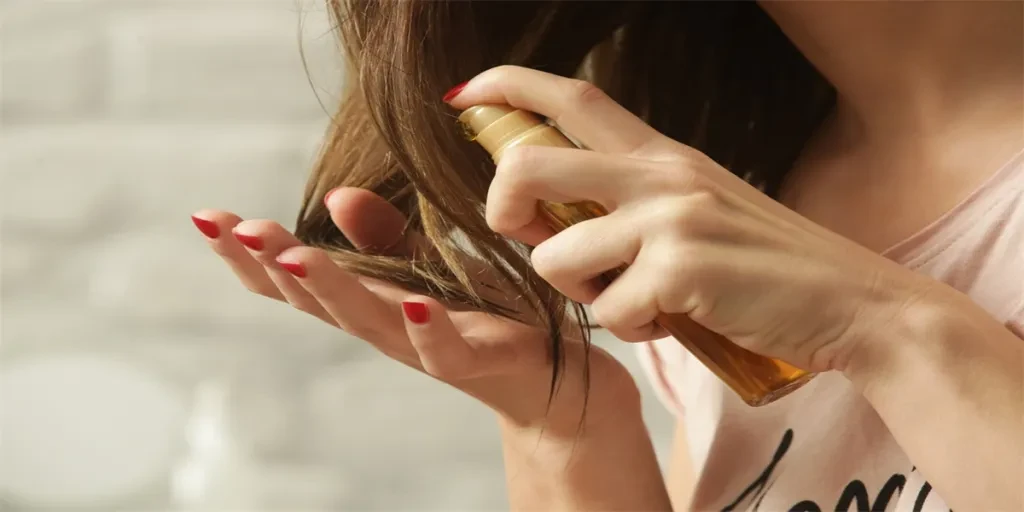We’ve all been there – you step out feeling confident, only to catch your reflection and see your hair standing on end. Static hair is a common frustration, especially during dry winter months or in low-humidity environments. But what causes this pesky problem, and more importantly, how can you combat it? In this guide, we’ll explore the science behind static hair, share expert tips to prevent it, and recommend products that can help you achieve smooth, manageable locks. Say goodbye to flyaways and hello to hair that behaves – no matter the season or situation.
Table of Contents
● What causes static in your hair?
● Quick fixes for on-the-go static control
● Long-term solutions for static-free locks
● Expert-recommended products
● Lifestyle changes for healthier hair
What causes static in your hair?

Have you ever wondered why your hair sometimes seems to have a mind of its own, standing up and clinging to everything in sight? The culprit behind this frustrating phenomenon is static electricity. Static occurs when there’s an imbalance of electrical charges within or between objects. In the case of your hair, it happens when strands build up an electric charge, usually due to friction or changes in humidity.
Several factors can contribute to static hair. Dry air is a major culprit, which is why static is more common during winter months when indoor heating systems reduce humidity levels. The materials your hair comes into contact with also play a role. Synthetic fabrics, plastic combs, and even some hair products can create friction that leads to static buildup. Additionally, over-washing or using harsh shampoos can strip your hair of its natural oils, making it more prone to static.
Your hair type can also influence how susceptible you are to static. Fine, straight hair tends to be more prone to static than thicker, coarser hair types. This is because finer hair has less weight, making it easier for individual strands to lift and separate when charged. Understanding these causes is the first step in effectively combating static and achieving smoother, more manageable hair.
Quick fixes for on-the-go static control

When static strikes unexpectedly, you need fast and effective solutions to tame those flyaways. One of the simplest tricks is to use a dryer sheet. Simply run it over your hair to neutralize the electric charge. This household item works wonders and can easily be kept in your purse or car for emergencies. If you don’t have a dryer sheet on hand, try running a small amount of hand lotion or moisturizer through your hair. The added moisture helps to reduce static and smooth down unruly strands.
Another quick fix is to use a metal comb. Unlike plastic combs that can exacerbate the problem, metal combs help to dissipate the electrical charge in your hair. If you’re out and about, even running your hands under water and then lightly patting your hair can help. The small amount of moisture introduced can be enough to calm static-charged strands.
For those who prefer a more natural approach, a light misting of water mixed with a few drops of lavender or rosemary essential oil can work wonders. Not only does this help control static, but it also leaves your hair smelling fresh. Remember, the key to these quick fixes is using them sparingly to avoid weighing down your hair or making it appear greasy.
Long-term solutions for static-free locks

While quick fixes are great for emergencies, implementing long-term strategies can help you prevent static before it starts. One of the most effective methods is to keep your hair well-hydrated. Use a moisturizing shampoo and conditioner, and consider incorporating a weekly deep conditioning treatment into your routine. These products help to nourish your hair, making it less prone to static buildup.
Adjusting your hair care routine can also make a significant difference. Try to avoid over-washing your hair, as this can strip away natural oils that help prevent static. When you do wash, use lukewarm water instead of hot, as extreme temperatures can dry out your hair. After showering, gently pat your hair dry with a microfiber towel instead of rubbing vigorously with a regular towel, which can create friction and lead to static.
Investing in the right tools can also help in your quest for static-free hair. Consider using an ionic hair dryer, which emits negative ions to help seal the hair cuticle and reduce static. When styling, opt for natural bristle brushes or wide-toothed combs, which are less likely to create static than their plastic counterparts. Lastly, don’t forget about your sleeping habits – switching to a silk or satin pillowcase can significantly reduce friction and static while you sleep.
Expert-recommended products

Hair care professionals recommend a variety of products to combat static and keep your locks smooth and manageable. Leave-in conditioners are a top choice among experts. These products provide continuous moisture throughout the day, helping to prevent static before it starts. Look for formulas containing natural oils like argan or jojoba, which can effectively hydrate your hair without weighing it down.
Anti-static sprays are another go-to product for many stylists. These lightweight mists are designed to neutralize electrical charges in your hair, providing instant relief from flyaways. Some even contain UV protectants, offering the added benefit of shielding your hair from sun damage. For those with particularly dry or damaged hair, hair oils or serums can be a game-changer. A small amount applied to the ends of your hair can help seal in moisture and prevent static.
Experts also emphasize the importance of using the right styling products. Alcohol-free mousses and gels can help control static while styling, especially for those with curly or wavy hair. If you use heat styling tools, a heat protectant spray is crucial. Not only does it shield your hair from heat damage, but many formulations also contain ingredients that help to smooth the hair cuticle and reduce static. Remember, when it comes to anti-static products, a little goes a long way – overuse can lead to product buildup and actually increase static.
Lifestyle changes for healthier hair

Beyond products and styling techniques, certain lifestyle adjustments can significantly impact your hair’s health and reduce its propensity for static. One of the most effective changes is to increase your water intake. Proper hydration from the inside out can improve your hair’s moisture levels, making it less prone to static. Additionally, incorporating foods rich in omega-3 fatty acids, such as salmon, avocados, and nuts, can help nourish your hair from within.
Managing your environment can also play a crucial role in combating static hair. During dry months or in air-conditioned spaces, consider using a humidifier to add moisture to the air. This can help prevent your hair from drying out and becoming staticky. When it comes to your wardrobe, opt for natural fibers like cotton or silk over synthetic materials, which are more likely to create static electricity when in contact with your hair.
Lastly, be mindful of your heat styling habits. Excessive use of hot tools can dry out your hair, making it more susceptible to static. Try to embrace your natural texture more often, and when you do use heat, keep it at a lower temperature. On particularly dry or cold days, consider protective hairstyles like braids or buns that keep your hair contained and less exposed to static-inducing elements. Remember, healthy hair is less prone to static, so prioritizing your hair’s overall health is key to keeping those flyaways at bay.
Conclusion
Taming static hair doesn’t have to be a constant battle. By understanding the causes and implementing the right strategies, you can achieve smoother, more manageable locks year-round. From quick fixes for unexpected flyaways to long-term solutions and lifestyle changes, you now have a comprehensive toolkit to combat static electricity in your hair. Remember, consistency is key – incorporating these tips and products into your regular hair care routine will yield the best results over time. Embrace your journey to static-free hair, and don’t be afraid to experiment to find what works best for you. With patience and the right approach, you’ll be well on your way to enjoying silky, static-free tresses that stay put and shine, no matter the season or situation.




